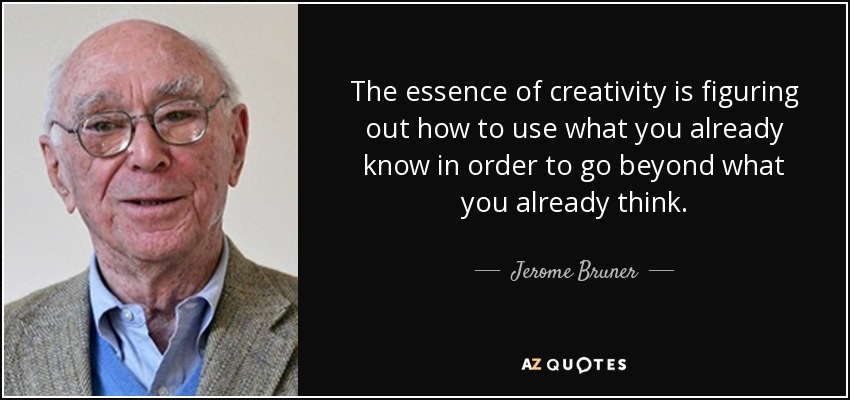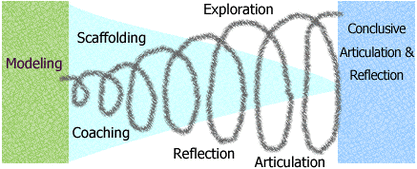Jerome Bruner was an influential psychologist and educational theorist who developed the theory of constructivism in education. According to constructivism, learning is an active process in which individuals construct their own understanding and knowledge of the world through their experiences and interactions with it. This theory emphasizes the role of the learner in the learning process and suggests that education should focus on helping students construct their own meaning and understanding, rather than simply transmitting information.
Bruner believed that learning should be an active, discovery-based process rather than a passive one in which students are simply told what to learn. He argued that when students are actively involved in constructing their own understanding, they are more likely to retain and apply what they have learned. To facilitate this process, he suggested that teachers should present new information in a way that is meaningful and relevant to students, using a variety of teaching methods such as problem-based learning, inquiry-based learning, and case-based learning.
One key aspect of Bruner's constructivist approach is the idea that people have different ways of understanding and interpreting the world. He argued that there are three distinct modes of representation - enactive, iconic, and symbolic - which correspond to different ways of understanding and interacting with the world. Enactive representation involves physical manipulation and movement, iconic representation involves visual representation, and symbolic representation involves the use of language and abstract symbols. Bruner believed that all three modes of representation were important for learning and that education should incorporate a variety of teaching methods that utilize all three.
Another important aspect of Bruner's constructivist approach is the idea that learning is a social process. He argued that people learn best when they are able to collaborate and discuss their ideas with others. Therefore, he suggested that education should incorporate a social component, such as collaborative group work and discussion, to facilitate learning.
In conclusion, Bruner's constructivist approach to education emphasizes the role of the learner in the learning process and suggests that education should focus on helping students construct their own meaning and understanding. It also highlights the importance of incorporating a variety of teaching methods and a social component in education to facilitate learning.
Jerome Bruner's 9 Theories for Better Education

When we encounter something new, we have to reconcile it with our previous ideas and experience, maybe changing what we believe, or maybe discarding the new information as irrelevant. For example, children learn about culture and worldview from their interaction with others. The Process of Education. Bruner considers that symbolic representation is crucial for cognitive development and, given that language is our main means of interpreting the world, it attaches great importance to language in the determination of cognitive development. Cognitive development can be accelerated.
Discovery Learning In Bruner's Theory On Constructivism

. The concept of scaffolding is very similar to Scaffolding involves helpful, structured interaction between an adult and a child with the aim of helping the child achieve a specific goal. Mahwah: Lawrence Erlbaum Associates. There are four types of Operant Conditioning that are Positive Reinforcement, Negative Reinforcement, Punishment, and Extinction. A narrative model of self-construction. That way, they can comprehend and process all information in a more effective manner.
Jerome Bruner: Scaffolding and Constructivism Theories

A college may have excellent material resources like equipments, building, library and other facilities along with a curriculum appropriately adopted lo suit the community needs but if the teachers are misfit or indifferent lo their responsibilities the whole programme is likely to be ineffective and wasted. Bruner addressed four major aspects in his theory, which are: 1. Despite some biases in his claim, Smith effectively informs his readers about the purpose and definition Psy 270 Week 5 Learning Theory Research Paper 652 Words 3 Pages The cognitive theory focuses on how people learn from the processing of information. After that, she picked and asked some of the students to tell her what were the contents and the taste of the food sample. Constructivism Theory Constructivism Theory encourages group work and the use of peers as resources collaborative learning.
Social Constructivism—Jerome Bruner

In the theory of constructivist learning, instructors act as facilitators. Therefore, the benefit of externalizing culture is the creation a social identity. Cambridge, MA: Harvard University Press. Cite this chapter Rannikmäe, M. Ideally, teaching his way should lead to children being able to solve problems by themselves. Regulation of the Government of the Republic of Estonia, No. Iconic Stage The iconic stage is the second stage of representation.







